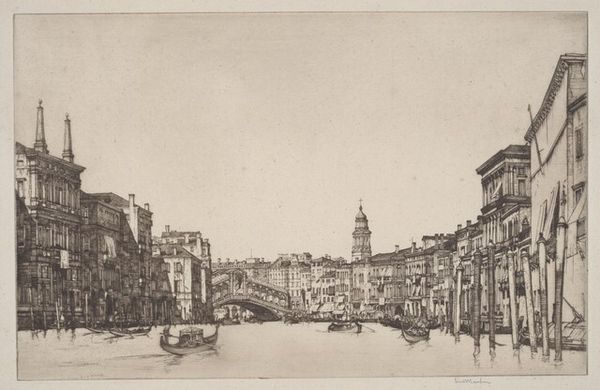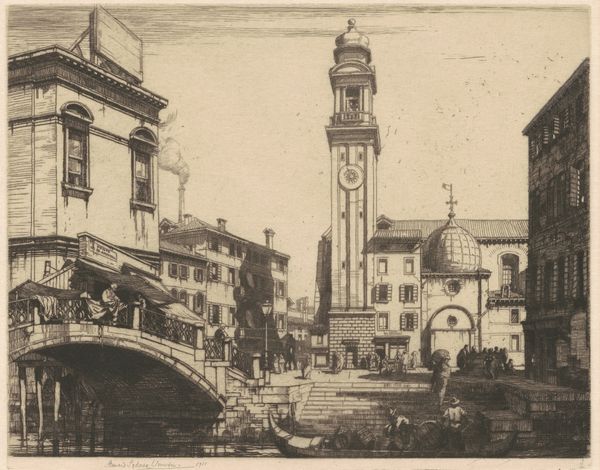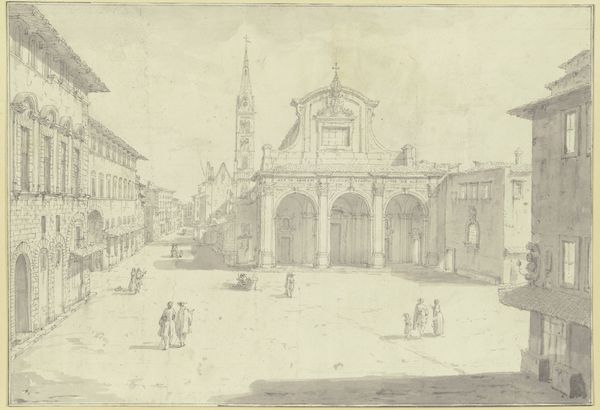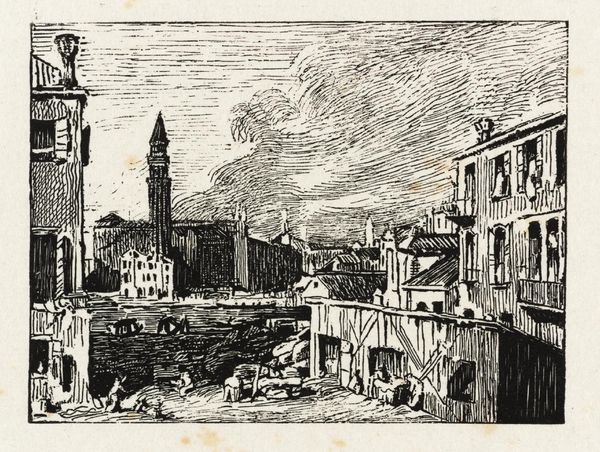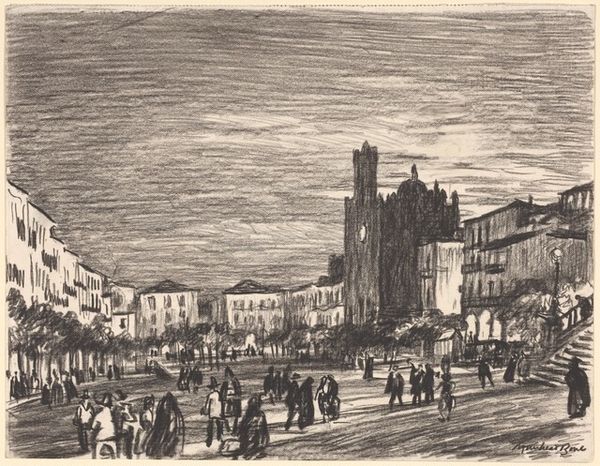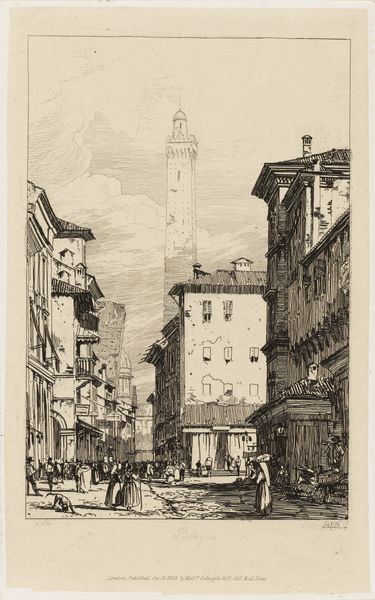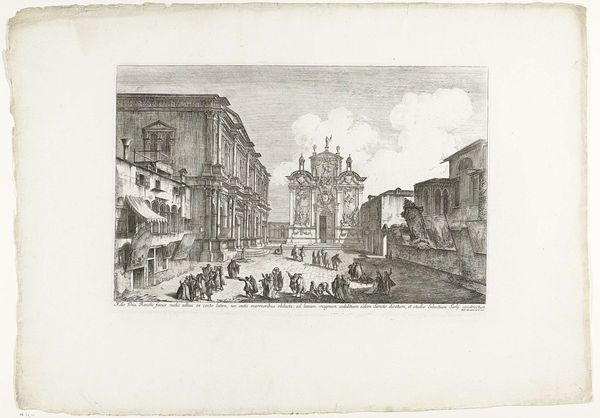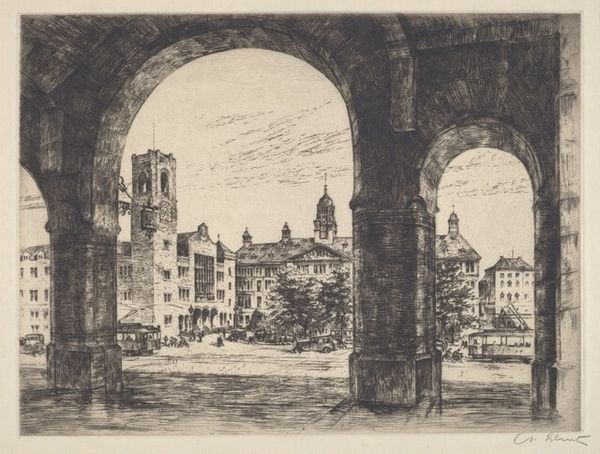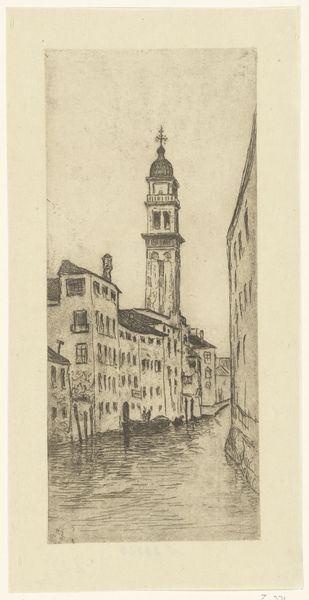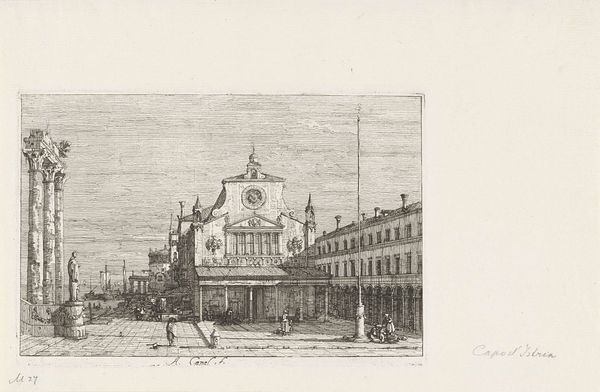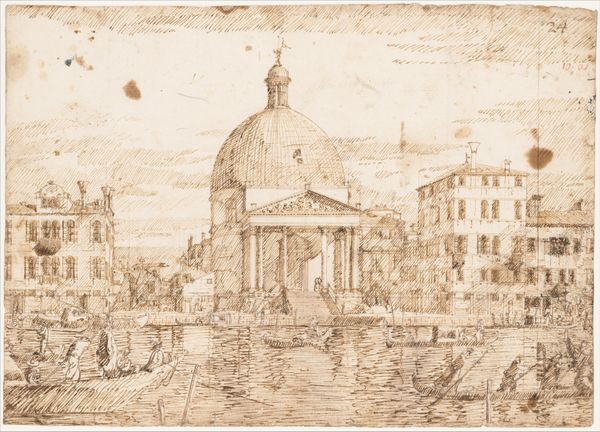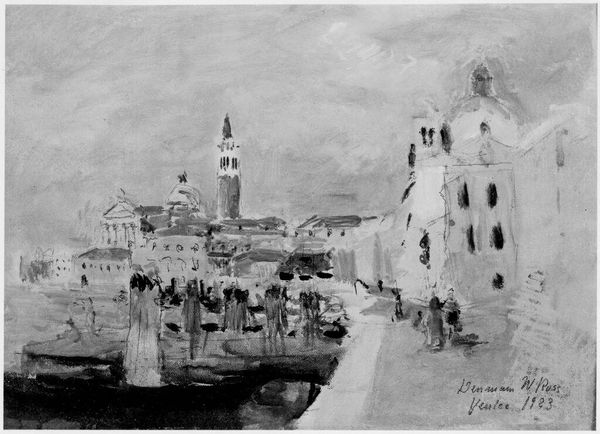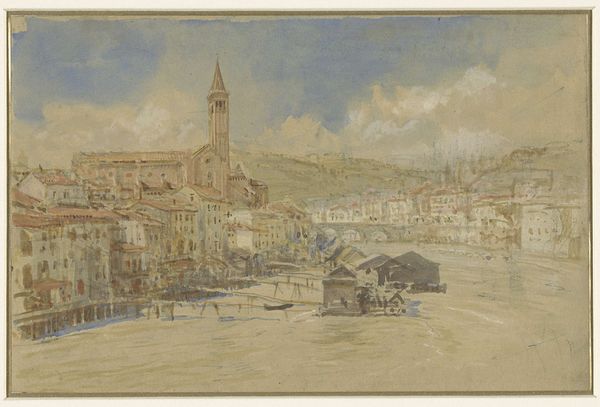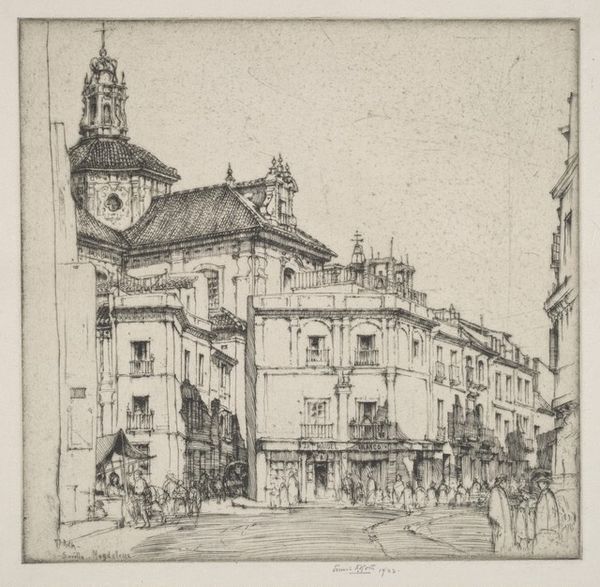
Dimensions: plate: 24.6 × 32.2 cm (9 11/16 × 12 11/16 in.) sheet: 31.9 × 44.3 cm (12 9/16 × 17 7/16 in.)
Copyright: National Gallery of Art: CC0 1.0
Curator: Ah, this print of the Campo Santa Maria Formosa, an etching created around 1912 by Emanuele Brugnoli, offers a fascinating glimpse into early 20th-century Venice. Editor: My first impression? Quietly chaotic. It’s like catching a snapshot of Venice waking up, all faded charm and whispered stories. The buildings lean in like old gossips. Curator: Brugnoli, though somewhat less known than some of his contemporaries, captured the spirit of Venice through the technique of etching, a medium popular for its ability to render intricate detail. Consider how the etched lines define the architecture and suggest the texture of the stone paving. Editor: Exactly! It's almost photographic in its detail, yet softer. I love how the light seems to seep through the paper, making the whole scene glow faintly. But also it is not all that glowy but rather ghostly… does this piazza even exists? It feels more real than life but also feels completely fabricated. Curator: This piece reflects a broader interest in cityscape and landscape as subjects within Venetian art. Artists aimed to document and celebrate the unique urban fabric, contributing to a sense of local identity and preserving an image of Venice as it modernized. Editor: Makes me wonder what the experience was of Venice back then! So much smaller, maybe less invaded by tourism, I would imagine. And thinking of what is gone... Does this picture, even being somehow ghostly, offers a tangible proof of the life back then? And who where these folks and how did they live. Curator: Well, we can infer from its composition and style the growing interest in realism among Italian printmakers in this period as well. While earlier depictions of Venice focused on the picturesque, Brugnoli included scenes of everyday life in the marketplace, offering a realistic snapshot. Editor: Which sort of redeems my "ghostly" interpretation— these folks and this moment actually happened. I can almost smell the pastries from the stalls, can't you? So, between being a ghost and being very much present... this etching offers a rather compelling interpretation of temporality. Curator: Indeed. Brugnoli provides us a visual document ripe with detail that historians like me find invaluable, shedding light on Venice and Venetian society at the dawn of the 20th century. Editor: For me, it's about feeling transported. It's about the hushed beauty and quiet drama held within those faded lines, even as it raises some existential considerations. It is a gorgeous snapshot from an artisan with much technical knowledge and craftmanship, but still the moment breathes by itself regardless.
Comments
No comments
Be the first to comment and join the conversation on the ultimate creative platform.
